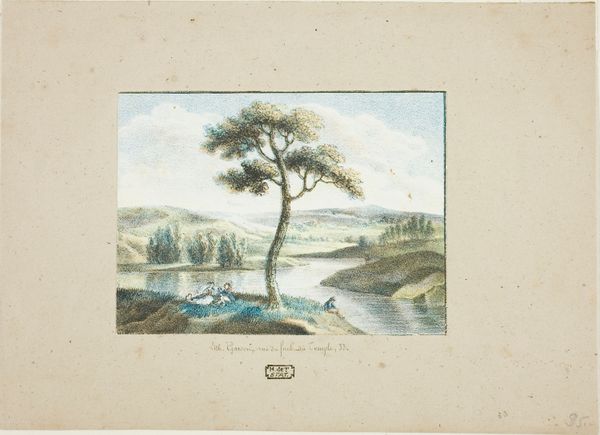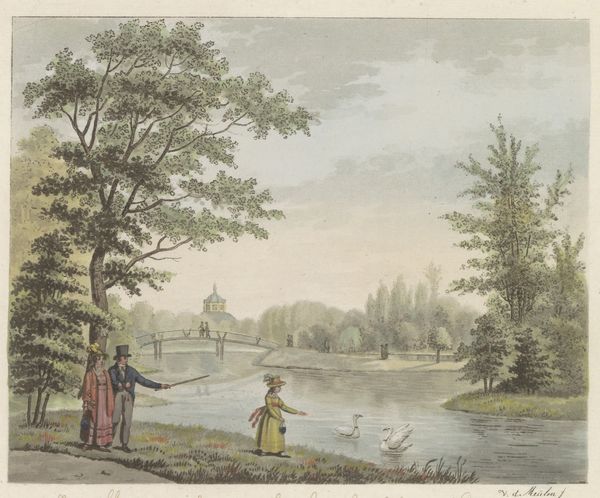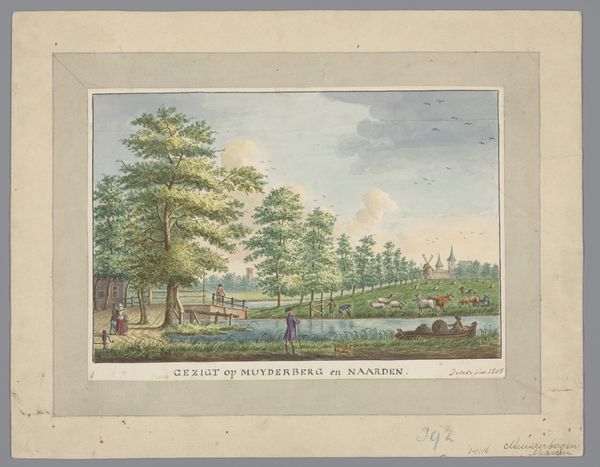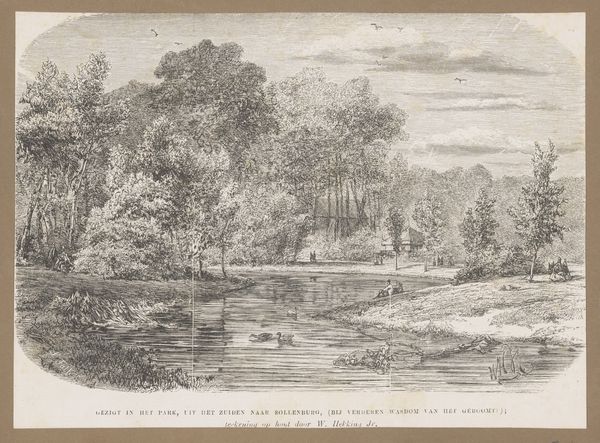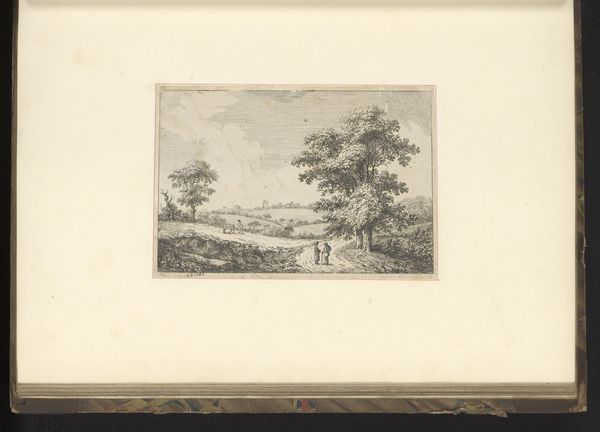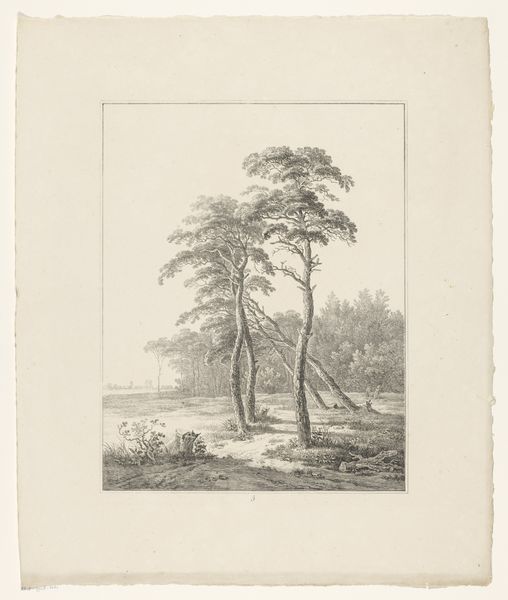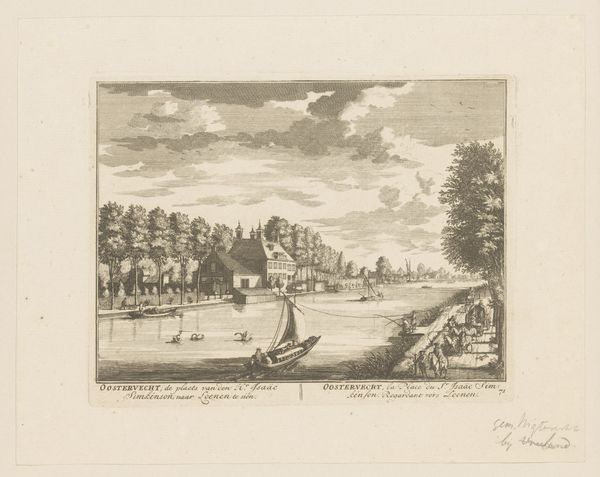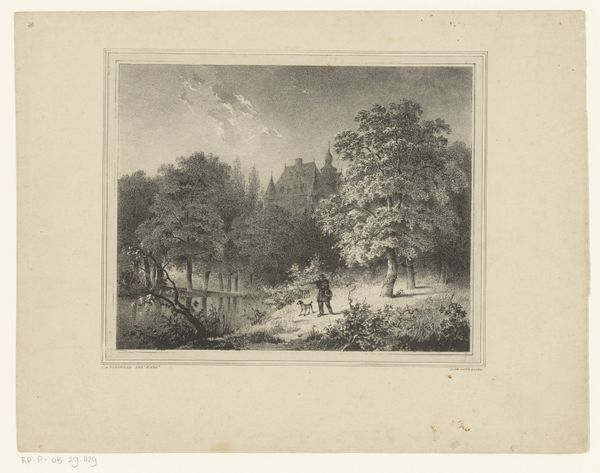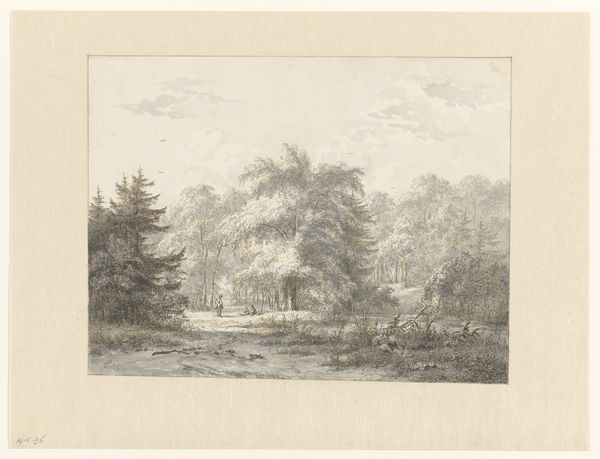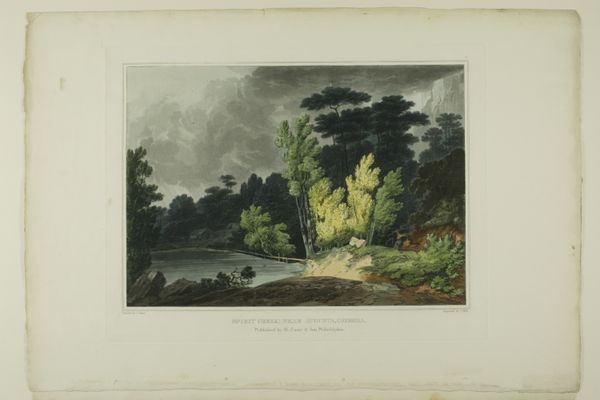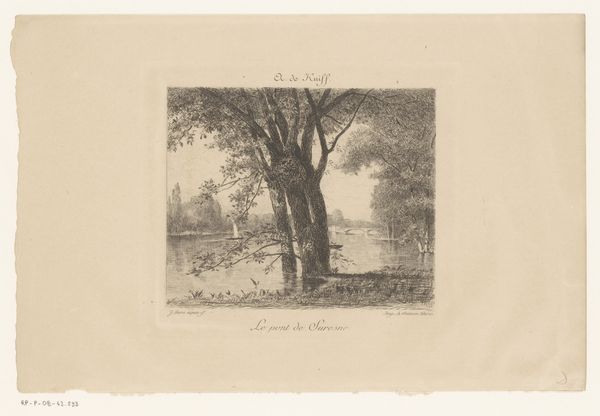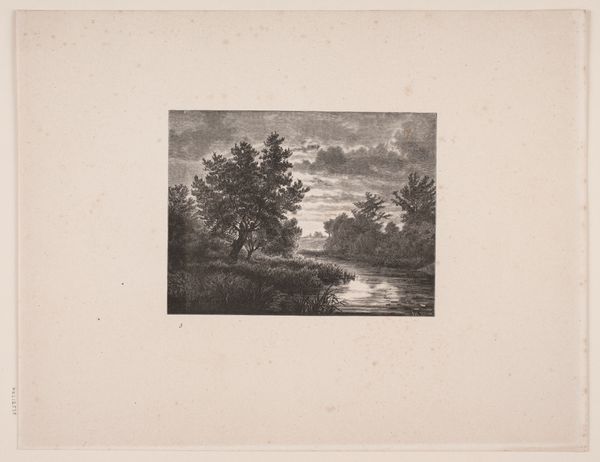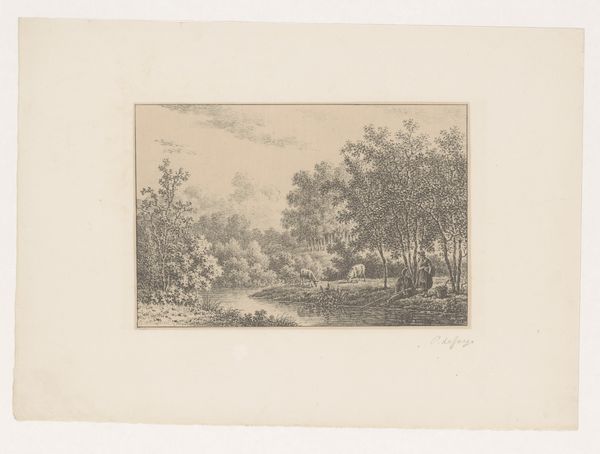
painting, watercolor
#
painting
#
landscape
#
watercolor
#
romanticism
#
park
#
genre-painting
Dimensions: height 188 mm, width 229 mm
Copyright: Rijks Museum: Open Domain
Curator: Welcome. We’re looking at Roelof van der Meulen's watercolor, "Wandelaars in een park," which translates to "Walkers in a Park." It's currently held in the collection of the Rijksmuseum and dates sometime between 1816 and 1833. Editor: My immediate impression is one of serene calm, a deliberate tableau vivant with almost symmetrical components that resolve around the placid central lake. The pale tonality reinforces this sense of tranquil composure. Curator: Indeed. Meulen situates the scene within a genre painting framework but renders it in a style characteristic of Romanticism. One can almost feel the weight of the burgeoning middle class and their relationship with newfound public spaces, with promenading as a form of leisure. Editor: Exactly, and note how Meulen has positioned the figures – in careful arrangements along the picture plane. It almost resembles a stage. Look at the precise, almost delineated brushstrokes of the tree’s foliage and the meticulously described figures; one feels an emphasis on balance rather than pure observation of natural forms. Curator: True, the spatial relationships lack atmospheric depth, perhaps indicating a deeper desire to portray an idealized societal image, with a distinct public space for leisure, fashion, and gender roles during the Empire era. Editor: Perhaps. Though, one also notes the restrained emotional quality. We get the idea this is more of a representation or societal reflection than of intense, subjective feeling as other paintings from the Romanticism movement may offer. This park setting may become less of a haven and more of a theatre here. Curator: Possibly a space of aspiration more than lived-in comfort. Though Meulen uses light, one can sense a more measured tonality throughout this work. It may represent his way of thinking about social life during a time when European societies and notions of leisure became progressively well-defined. Editor: I find this glimpse of bourgeois leisure to have so much clarity, despite its historical distance, particularly the almost neoclassical order within the frame. This image feels almost photographic in its frozen elegance. Curator: Precisely. It really reflects Romanticism and public sphere being reshaped in society, wouldn’t you say? Editor: I agree wholeheartedly.
Comments
No comments
Be the first to comment and join the conversation on the ultimate creative platform.
